CARGO OPERATIONS
Cargo is the goods or merchandise carried in a ship, airplane, or other vehicle. The very first scheduled commercial airline flights were set up to carry mail. So cargo has been carried by air since airlines first began operating.
The carrying of cargo did not become a major part of commercial aviation until the 1950s, however. In fact, the first all-cargo air routes were established only in 1949.
Today the world s largest all-cargo airline is the Flying Tiger Line. The first cargo plane used by this company was the Budd Conestoga shown in the photo below. The first cargo carried by the Flying Tiger Line was a planeload of fresh grapes that was shipped from California to Georgia.
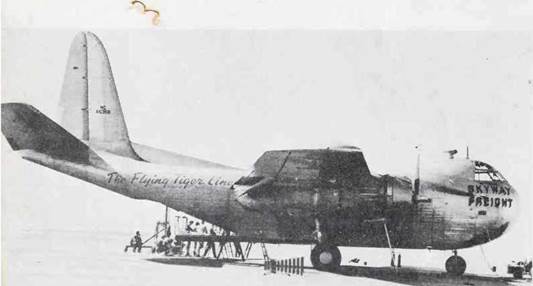
The Conestoga was an all-stainless-steel, rear-loading, twin-engine aircraft. It was capable of carrying 7,000 pounds of cargo over a distance of 500 miles. This rather
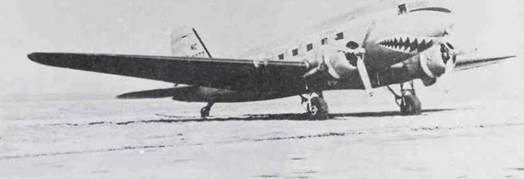 |
cumbersome-looking aircraft had a cruise speed of 150 miles per hour.
The Douglas C-47 shown in the photo above was the cargo version of the famed DC-3. The C-47 was a good reliable plane. Its performance as a cargo aircraft was better than the Budd Conestoga because it could carry 7,500 pounds of freight over a range of 600 miles at 150 miles per hour. An airline that used the C-47 had a slight competitive edge over one that used the Conestoga.
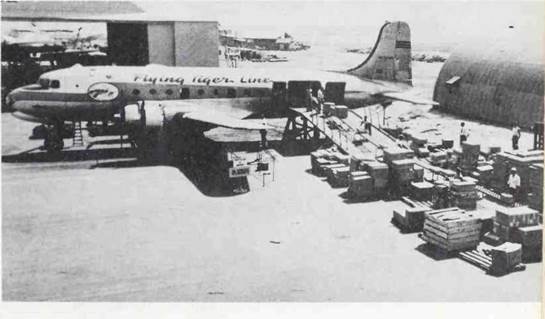 |
The C-54 was the first of the four-engine airfreighters. In the photo below, cargo is being moved into a C-54 along an airfreight dock at Burbank, California. Flying at 210 miles per hour, a C-54 could carry 20,000 pounds of cargo over a 2,000-mile range. In the late 1940s, a fleet of C-54S flew from the United States to Tokyo on an eight – flight-per-day schedule for almost a year to supply the American Occupation Forces in Japan.
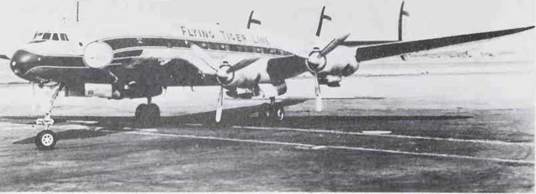 |
The Lockheed Super H Constellation is shown above. This plane was put into service in 1957. It could airlift.
43,0 pounds of freight at 300 miles per hour. The Super H Constellation had the first true coast-to-coast nonstop range of 2,500 miles. Transcontinental airfreight schedules were revolutionized by this plane.
The design of cargo aircraft evolved along with the growth of the freight business. And in 1961, the first turbine-powered airfreighter, Canadair CL-44, shown below, was placed in service. The CL-44S unique swing-tail design permitted straight-in loading of up to 65,000 pounds of freight. This airfreighter cruised at 375 miles per hour over a range of 3,000 miles.
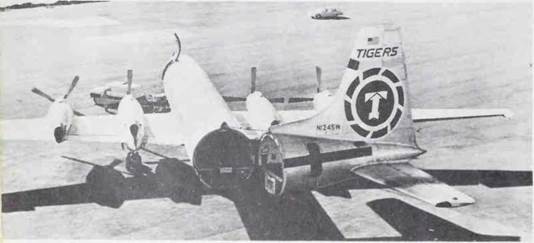 |
The DC8-63 was the first of the jumbo-jet airfreighters. This sleek giant—shown at the top of the opposite page – carries a payload of 110,000 pounds at 550 miles per hour over a 3,000-mile range. Today major markets of the United States and Asia are linked by these huge airfreighters.
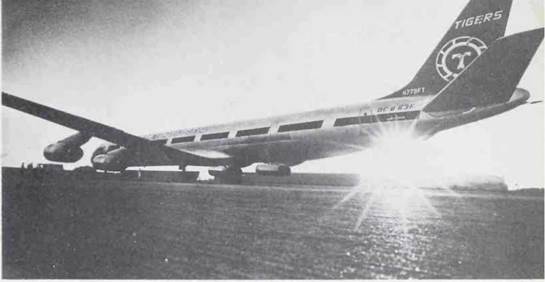 |
There is a continuing need for greater cargo capacity in world-wide airfreight operations. Wide-bodied aircraft like the Boeing 747 have large volume capacities. Boeing has built some 747s to carry freight.
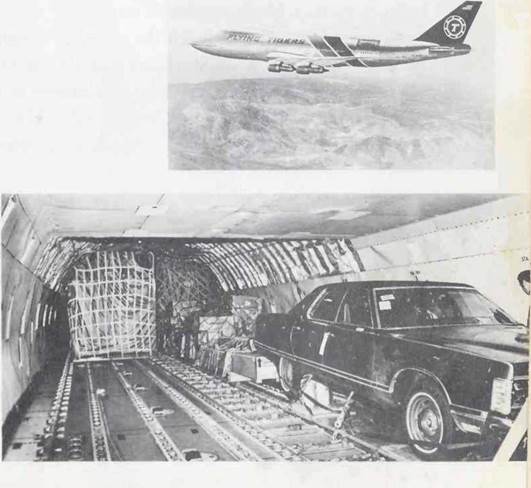 |
The Flying Tiger Line uses some of Boeing s awesome giants to carry cargo to world-wide markets. The 747 airfreighter and its interior are shown below. This giant can carry 200,000 pounds of cargo at 575 miles per hour over a 3,500-mile range.










